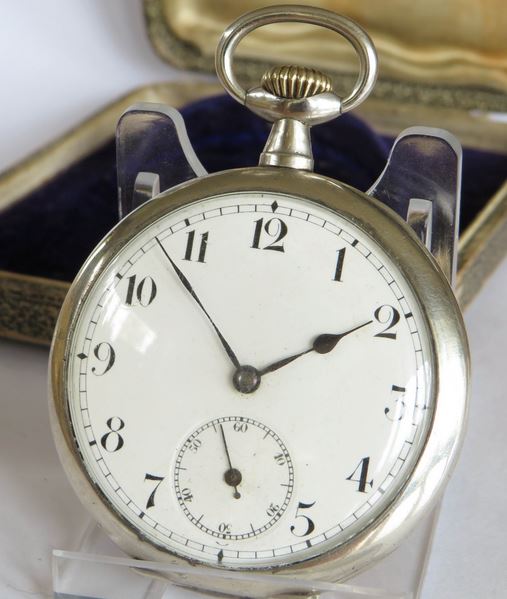I recently came across a vintage watch lying in the bottom of an old jewellery box. It belonged to my wife’s late grandmother and dated from the 1950s. My interest lies in genuine antiques so I only took a casual interest in the watch. It is tiny, with a 20mm case of 9ct rolled-gold. The off-white dial had Arabic numerals, gold-coloured Dauphine hands and a small seconds sub-dial. Printed on the dial was the name, Lanco, 15 jewels and Swiss made. I didn’t have a further interest in the watch, however, I was interested to see if there was any history behind the brand, Lanco.
It turns out that Lanco was a brand registered by the Langendorf Watch Company SA in the late 1950s. The name was an abbreviation of LANgendorf Watch COmpany. The brand was discontinued in the late 1960s and revived again from 1971 to around 1980. Apparently, in the late 19th century the Langendorf Watch Company was one of the largest producers of watches in the world. There is not a great deal of history online for the company, much of what I have read is simply the same content cut and pasted from unattributed sources.
Update: Most online sources report that the Lanco brand was registered in the late 1950s. However, the brand was in use long before that time. I have seen numerous examples of the Lanco name being used on the dials and movements of pocket watches dating well before that time. The I oldest verifiable example I have seen is a pocket watch, dated by its British hallmark to 1907.
Uhrenfabrik Langendorf SA
The company’s founder was Colonel Johann Viktor Kottmann (1822–1881) who had a background in the industrial production of chicory and tobacco products since the 1850s. In 1873 he acquired a chicory factory in the village of Langendorf, Switzerland. The factory was converted to produce ebauches (blank movements for watches) for other watch-producing companies. The business was originally known as Uhrenfabrik Langendorf SA.
Apparently, by 1880 the company was employing 70 to 80 staff. However, business was suffering due to the social conditions of their employees. Alcohol abuse was rife amongst the staff as was absenteeism. The business was close to collapse.
In the middle of 1880, Johann’s son, Karl Kottmann (1844–1890) took over the business. He saw the need for adopting socially responsible initiatives in order to turn around the lives of his employees. The business began investing in housing and training for its workers. It built schools, a hydrant system and financed the installation of electric lights in Langendorf. With the social initiatives in place, orders began flowing in, and production grew strongly. Karl was able to attract specialists from elsewhere in Switzerland who helped turn the company around. This included the young watchmaker, Fritz Meyer, who went on to establish Meyer & Studeli SA.

Langendorf Watch Company SA
Karl Kottmann died in 1890, and the technical director, Lucien Tieche, took over the company and changed its name to Langendorf Watch Company SA. All major watch-producing companies from the Neuchâtel area were ordering parts and ebauches from the Langendorf Watch Company. The company’s workforce increased to around 1000 by 1890. At this point, the Langendorf Watch Company was probably the largest watch manufacturer in the world.
In 1902, Ernst Kottmann (1874–1944) became manager of the company which he led until 1942 when he had to resign due to ill health. Among other initiatives, Ernst made the change from steam-powered production to electricity. His brother Rudolf Kottmann managed the company until 1964. Hans Kottmann took over in 1964, but died the same year in an accident. The company was then led by Guido Kottmann and a committee of family members. Ultimately, due to challenging business conditions the company decided to join a conglomerate of watchmakers called “Schweizerischen Gesellschaft für Uhrenindustrie AG” (SGU) in 1964. Soon after, in 1965, the Langendorf Watch Company was bought by “Société Suisse pour l’Industrie Horlogère SA” (SSIH) which was itself the result of a 1930 merger between Omega and Tissot.
The Langendorf Watch Company was attractive because of its modern manufacturing equipment and the Lanco brand. The acquisition, allowed SSIH to broaden its product range and use modern machinery to produce quality products at a lower cost than before. In 1973, production ceased at the Langendorf factory after precisely 100 years of operation. The Lanco brand was relegated to the Aetos Watch Company, another sub-branch of SSIH.
Related content
Langendorf Watch Company SA at Wikipedia